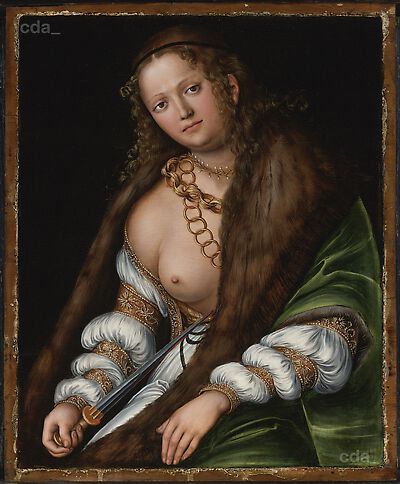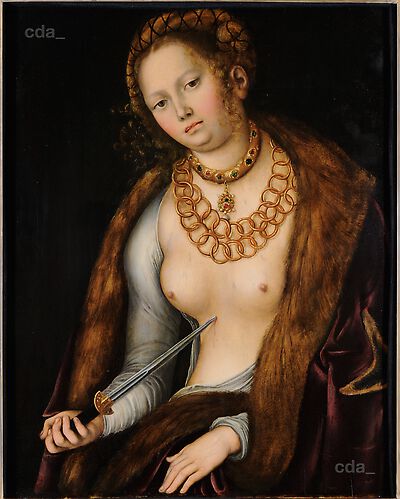The painting depicts Lucretia as a seated half-length figure in contemporary dress with contemporary accessories.
Her white dress with its puffed sleeves has slipped off her shoulders to reveal her chest. Only her left breast is covered by the green fur-trimmed gown. Lucretia's left hand rests in her lap and she
The painting depicts Lucretia as a seated half-length figure in contemporary dress with contemporary accessories.
Her white dress with its puffed sleeves has slipped off her shoulders to reveal her chest. Only her left breast is covered by the green fur-trimmed gown. Lucretia's left hand rests in her lap and she holds the long dagger in her right hand. She has raised it slightly and it touches her under the right breast. Lucretia's head is inclined slightly to the left and she looks at the viewer. Her curly brown hair is held back with a black hair-band. She wears an artistic chain and two large linked chains as well as another large chain around her neck.
The background is dark.
[Herrschaft, cda 2012]
According to the legend Lucretia lived in the 6th century BC and was the beautiful and virtuous wife of the roman Collatinus. The roman King's son - Sextus Tarquinius fell in love with her. During a stay in her house Sextus threatened to kill her and shame her honour if she did not surrender to him. After the rape Lucretia had her father and husband vow vengeance and then she stabbed herself. The event led to an uprising in which the royal family was overthrown and the Roman Empire became a Republic.
Depictions of Lucretia who was seen as the epitomy of female virtue, chastity, fidelity and honour enjoyed great popularity, particularly in the 16th century.
[Literature: Bierende 2002, Follak 2002, Livius 1909]

